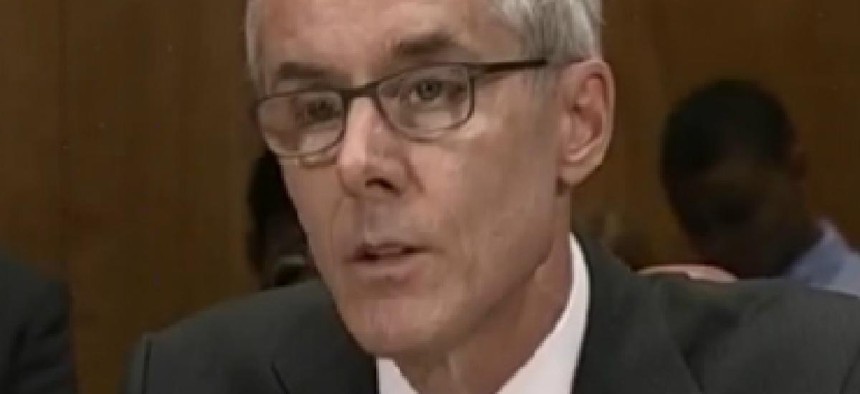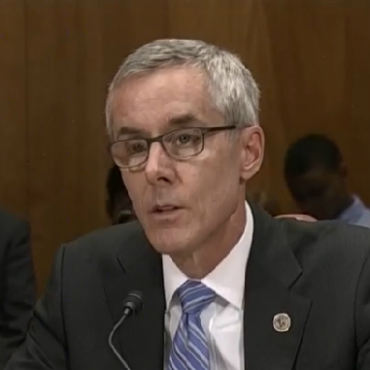Can new tech speed airport security lines?

The head of the Transportation Security Administration faced tough questions from lawmakers on speeding airport screening lines.

TSA Administrator Peter Neffinger testifies on Capitol Hill.
To address the long security lines at airports, the Transportation Security Administration is testing new technology that includes adding automated screening lanes and new passenger screening capabilities.
TSA Administrator Peter Neffenger testified before the Senate Homeland Security and Governmental Affairs Committee on June 7 about what TSA is doing to speed up the security process while keeping passengers safe.
One of the solutions he proposed was using new automated screening lanes at airport checkpoints -- essentially separate conveyor belts that can speed up the process of passengers putting their belongings in the bins prior to screening. That approach could handle six people at a time; the current system can only process one person at a time. As Neffenger explained it, "there's no waiting for the person in front of you."
Hartsfield-Jackson Atlanta International Airport is the only airport that is currently testing the lanes, under a $1 million program funded by Delta Air Lines. A TSA spokesperson told FCW that the agency plans to test the same method by the end of the year at John F. Kennedy and Denver international airports, with the goal of having the lanes at all airport checkpoints to streamline the security screening process.
TSA is also looking for contractors that can provide new technology for body-scan machines and carry-on screeners.
In a request for information, TSA asked for insight into new technology that addresses emerging threats such as homemade explosives, weapons and contraband, and the need to handle increased volume.
"The TSA is interested in exploring technical alternatives to screen passengers for anomalies with increased detection capabilities, increased throughput, and limited false alarm rates while minimizing divestiture requirements and life cycle costs," the RFI states.
Neffenger told lawmakers that current body-scan machines are being deployed wherever possible.
Officials also want to enhance the process for screening carry-on items under TSA's Innovation Task Force, which facilitates faster acquisition of private-sector technology and solutions. In a draft broad agency announcement, officials said TSA is interested in exploring solutions based on computed tomography and other mature X-ray solutions that would not require the removal of electronics, liquids or other items from passengers' luggage beforehand.
The methods would ideally use advanced algorithms to identify any prohibited items that might be inside a carry-on bag.
In a 2015 review by the Department of Homeland Security's inspector general, TSA failed more than 90 percent of tests in which mock explosives and prohibited items were moved through security checkpoints. During the June 7 congressional hearing, DHS IG John Roth praised TSA's progress since that report was issued, saying "We have gone from night to day."
The IG's office plans to conduct another phase of testing for this summer.
However, an audit earlier this year revealed that TSA faces some challenges when it comes to its IT controls, including unpatched software and inadequate contractor oversight.
This year, Congress reallocated $34 million for DHS to address the growing volume of airline passengers and fix some of the vulnerabilities. That will lead to an additional 768 TSA officers being deployed to airport security checkpoints by June 15, according to the agency.


